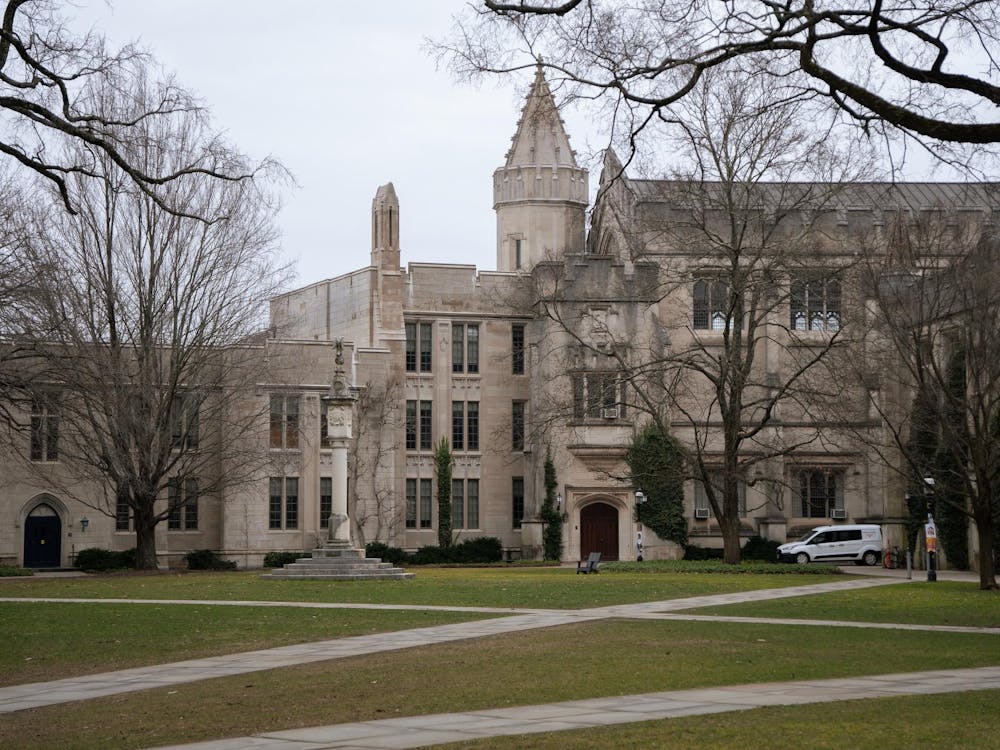While literature features many stories about the meteoric rise and sudden fall of a remarkable individual, the life of University professor and Nobel Prize-winning economist and mathematician John Nash GS ’50 is extraordinary because it also had a third act of recovery, biographer Sylvia Nasar said in a lecture Saturday.
Nasar’s lecture occurred on the same day as a memorial service for Nash, who battled paranoid schizophrenia and whose work in game theory won the Nobel Memorial Prize in Economic Sciences in 1994. Nash and his wife Alicia died in ataxi accidentin June.
Nasar’s 1998 biography of Nash, “A Beautiful Mind,” was nominated for a Pulitzer Prize and was made into a film of the same name in 2001.
Nash was born in 1928, grew up in Bluefield, W. Va., and was a peculiar, solitary and intellectually precocious child, Nasar explained. He attended Carnegie Institute of Technology for his undergraduate degree, graduating in 1948 with a B.S. and M.S. in mathematics. Nash then attended the University, earning a Ph.D. in 1950 with a dissertation on non-cooperative games.
Nasar noted that the letter of recommendation he got from his professors at Carnegie Tech simply said: “This man is a genius.”
Despite Nash’s “beautiful mind” and good looks, Nash was not especially well liked by his classmates at the University, Nasar said. She noted that classmates considered him weird and haughty and that he avoided books and classes on principle.
“He was always seen working inside his own head,” Nasar said.
Nasar explained that during the 1950s Nash’s peers considered him a “bad boy,” as by the age of 30 he had become a full professor, was singled out by Fortune magazine and had gotten a glamorous and intelligent woman to fall in love with him. Alicia de Lardé, whom Nasar described as an “El Salvadorian princess,” married Nash in 1958.
Nasar added that despite de Lardé’s looks and stiletto heels, she possessed a steely resolve.
“As it turned out, she would need all the mettle that she had,” Nasar added. “Beneath this shiny surface of John Nash’s life lurked chaos and confusion: a neglected illegitimate son, a secret lover and an ambivalence toward his new marriage and toward his new wife’s pregnancy.”
Signs of mental instability came to light soon after Nash’s marriage, Nasar said. She noted that one time Nash claimed that a New York Times article contained subliminal messages from aliens in another galaxy. After a highly anticipated Columbia lecture degenerated into a bunch of non sequiturs, Alicia Nash decided to see psychiatrists about her husband.

John Nash was diagnosed with paranoid schizophrenia, and for a very long time it looked as though he would not recover, Nasar said. She noted that he could no longer teach and was repeatedly hospitalized, chased out of stores and coffee shops and avoided by former colleagues.
“By the age of 40, everything that had made his life worthwhile to him was lost,” Nasar said.
She noted that, ironically, Nash’s earlier work became more and more important and recognized in various fields just as he sank deeper and deeper into poverty, illness and obscurity.
Eventually, after 30 years, Nash woke up, Nasar said. She noted that the recovery was not due to modern drugs, but was instead caused by the natural process of aging, the support of people close to him and his own struggles to manage his delusions. Nash then won the Nobel Prize in Economics in 1994.
The hero of the story of John Nash was Alicia, Nasar said.
“She set out to marry a golden boy she was sure would become famous one day, but only a few months after they married her girlish notions of romance were shattered by his illness, and she responded with great courage, compassion, warmth and dignity,” Nasar said.
She noted that while the Nashes did divorce in 1963, Alicia Nash never gave up on her husband, and agreed to help him after he wrote her a letter. After a 38-year gap, the Nashes remarried.
Nasar said that while John Nash’s third act should not have ended the way it did, it was a great act.
“We may not see the likes of John Nash again, but his story will live on,” Nasar said.
The lecture, entitled "John Nash: the story of a beautiful mind," took place at 4:30 p.m. in McDonnell Hall, and was organized by the University mathematics department.








